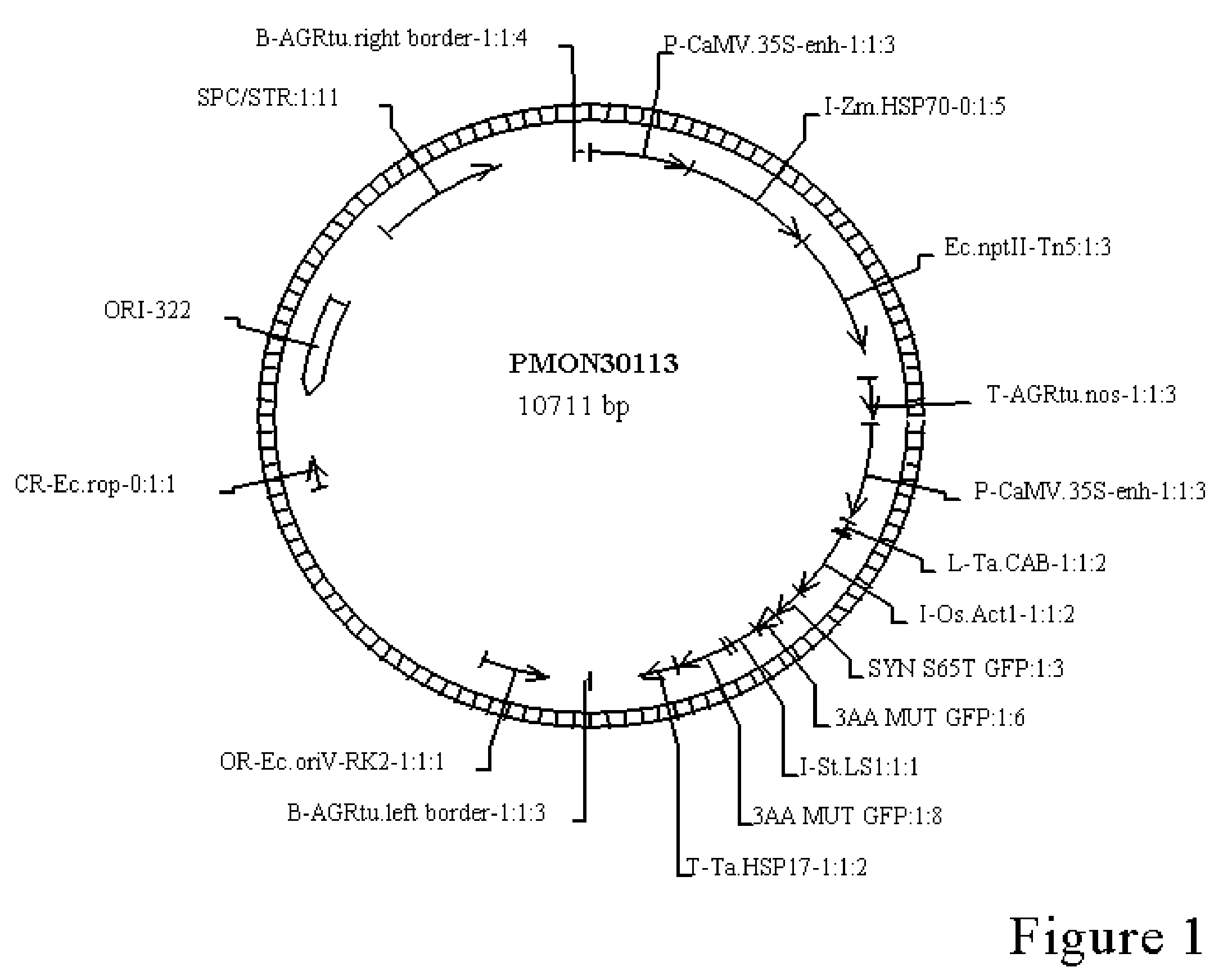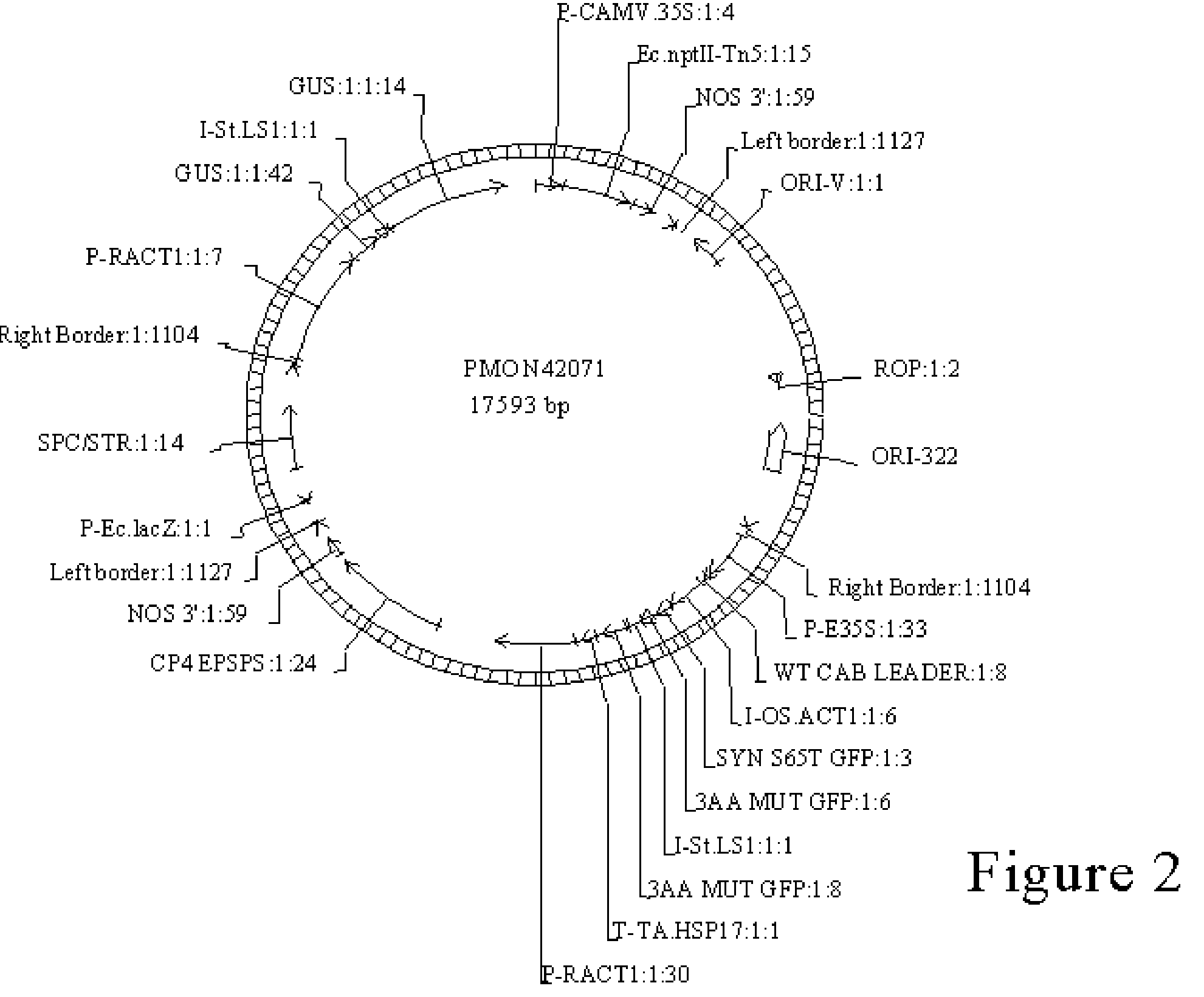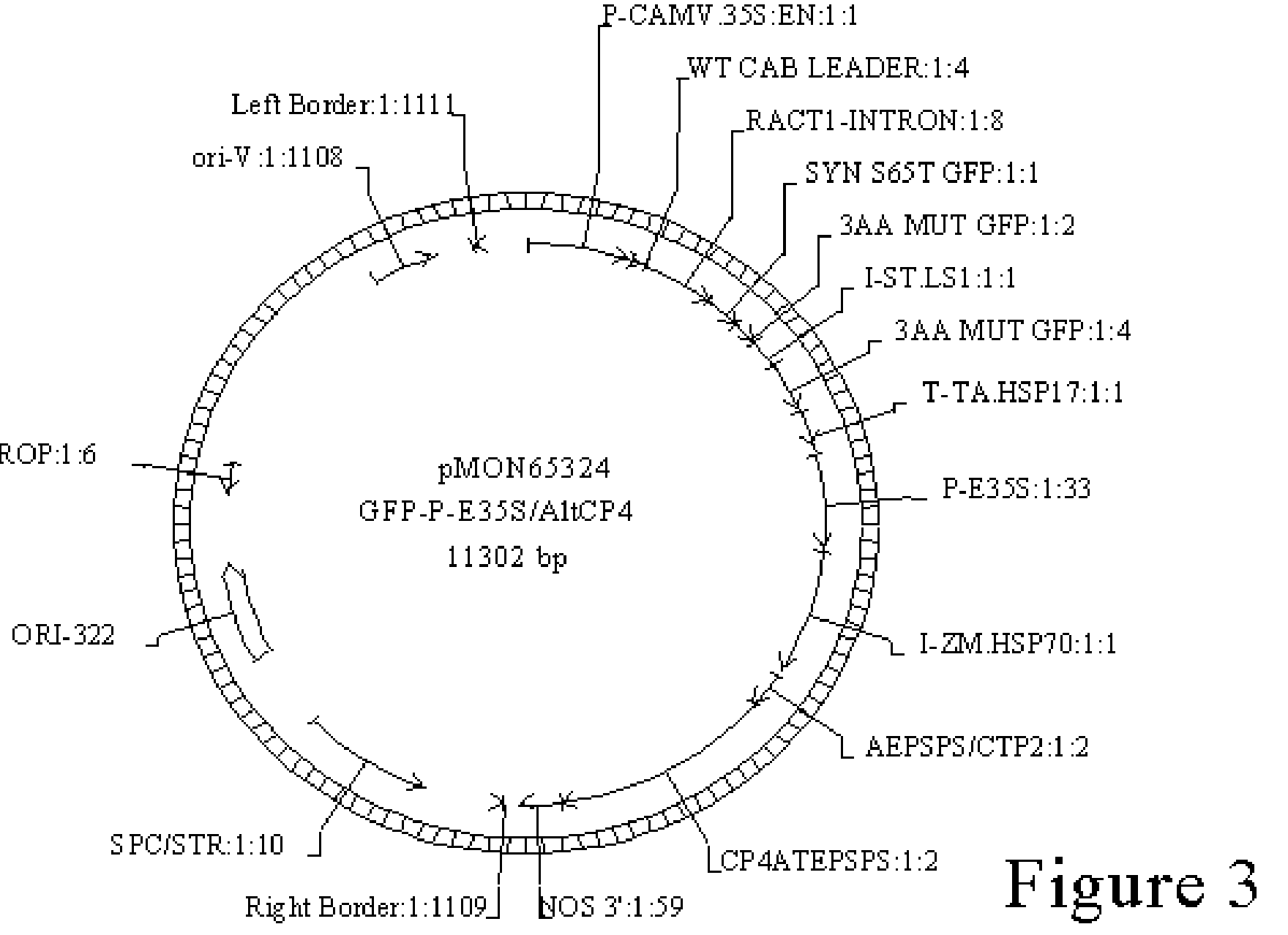Methods for corn transformation
a technology of corn and corn kernel, applied in the field of methods and systems for genetically transforming corn, to achieve the effect of stable and efficient transformation of cereal plants, rapid and efficient transformation process
- Summary
- Abstract
- Description
- Claims
- Application Information
AI Technical Summary
Benefits of technology
Problems solved by technology
Method used
Image
Examples
example 1
Bacterial Strains and Plasmids
[0060]Agrobacterium tumefaciens strain ABI is harbored with the binary vectors pMON30113 (FIG. 1), pMON42071 (FIG. 2), or pMON65324 (FIG. 3). The T-DNA in pMON30113 contains a neomycin phosphotransferase II gene (nptII) as the selectable marker and a green fluorescence protein gene (gfp) screenable marker, both driven by 35S promoter, respectively. pMON42071 has 2 T-DNA, with nptII driven by an e35S promoter and GUS genes by a rice actin promoter on one T-DNA and CP4 driven by a rice actin promoter and gfp genes by an e35S promoter on another. pMON65324 has CP4 and gfp genes each driven by an e35S promoter also on the T-DNA.
example 2
Preparation of Agrobacterium
[0061]Agrobacterium ABI containing a vector in glycerol stock is streaked out on solid LB medium supplemented with antibiotics kanamycin (50 mg / L), spectinomycin (50 mg / L), streptomycin (50 mg / L) and chloramphenicol (25 mg / L) and incubated at 28° C. for 2 days. Two days before Agrobacterium inoculation of the maize immature embryos, one colony or a small loop of Agrobacterium from the Agrobacterium plate is picked up and inoculated into 25 mL of liquid LB medium supplemented with 100 mg / L of spectinomycin and 50 mg / L of kanamycin in a 250-mL flask. The flask is placed on a shaker at approximately 150 rpm and 26° C. overnight. The Agrobacterium culture is then diluted (1 to 5) in the same liquid medium and put back on the shaker. Several hours later, one day before inoculation, the Agrobacterium cells are spun down at 3500 rpm for 15 min. The bacterium cell pellet is re-suspended in induction broth with 200 μM of acetosyringone and 50 mg / L spectinomycin a...
example 3
Explant Preparation
[0064]Several genotypes of corn were used in this study. Ears containing immature embryos are harvested approximately 10 days after pollination and kept refrigerated at 4° C. until use (up to 5 days post-harvest). The preferred embryo size for this method of transformation is ˜1.0-2.0 mm. This size is usually achieved 10 days after pollination inside the green house with the growth conditions of an average temperature of 87° F., day length of 14 hours with supplemental lighting supplied by GE 1000 Watt High Pressure Sodium lamps.
PUM
| Property | Measurement | Unit |
|---|---|---|
| temperature | aaaaa | aaaaa |
| time | aaaaa | aaaaa |
| time | aaaaa | aaaaa |
Abstract
Description
Claims
Application Information
 Login to View More
Login to View More - R&D
- Intellectual Property
- Life Sciences
- Materials
- Tech Scout
- Unparalleled Data Quality
- Higher Quality Content
- 60% Fewer Hallucinations
Browse by: Latest US Patents, China's latest patents, Technical Efficacy Thesaurus, Application Domain, Technology Topic, Popular Technical Reports.
© 2025 PatSnap. All rights reserved.Legal|Privacy policy|Modern Slavery Act Transparency Statement|Sitemap|About US| Contact US: help@patsnap.com



